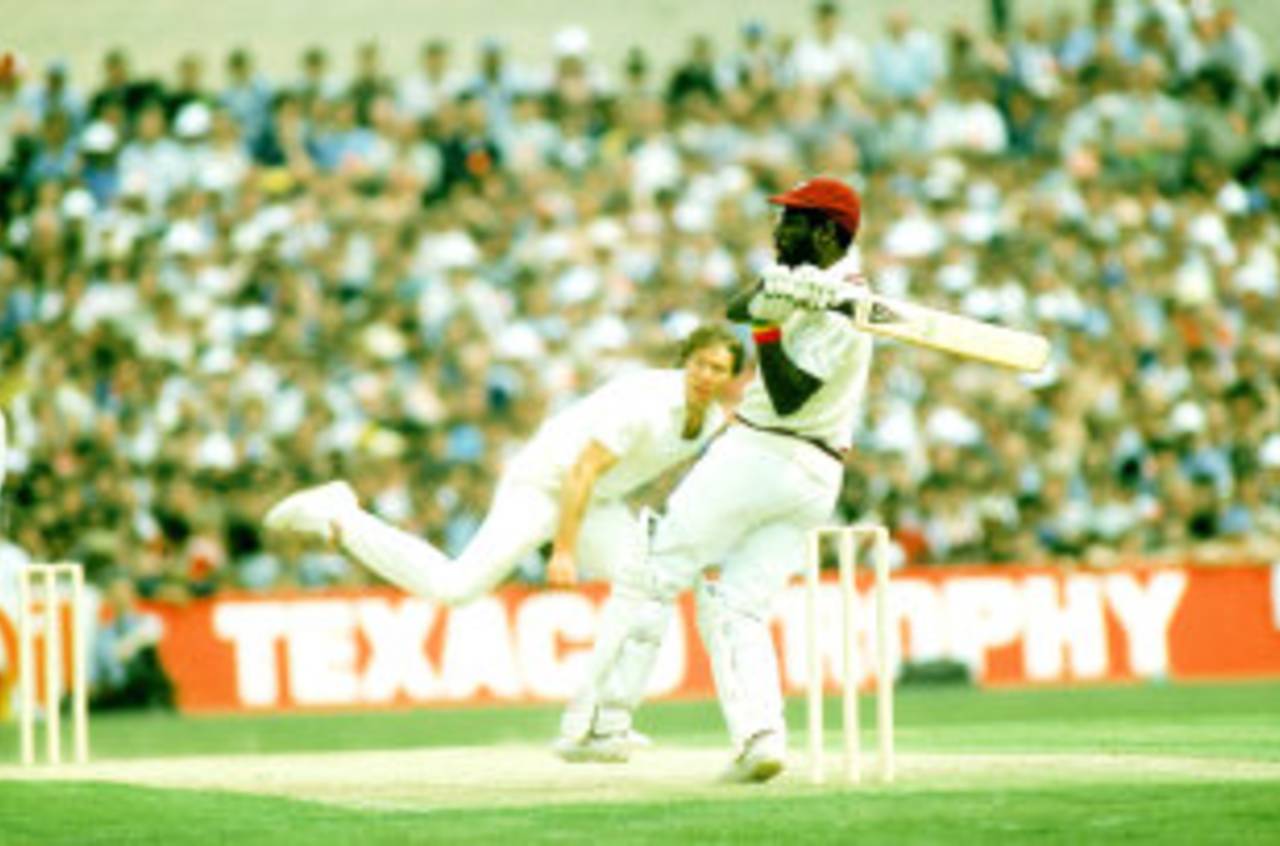As I watch Marlon Samuels and Shivnarine Chanderpaul bravely battle at Lord's on this Sunday morning, I am reminded yet again of an often overlooked fact: that the great West Indian teams of the 1980s, while always associated with dashing, hard-hitting batsmanship, were eminently capable of obdurate, defensive batting as well.
West Indies won a lot of Test matches in the 1980s (and later as well) not just because their fast bowlers blew away opposing sides (and contrary to the mythology perpetuated in Fire in Babylon, with more than just bouncers), but because their batsmen were often able to suppress an attacking instinct and put their heads down for the sake of the team. The image of the 1980s West Indies as all batting pyrotechnics, all the time, is one of the most persistent and enduring misconceptions of that great team. It is the converse of the suggestion that the West Indies fast bowling merely intimidated and battered the opposition into submission.
As but one example: During the
1984 Old Trafford Test, West Indies were 70 for 4 when Jeff Dujon joined Gordon Greenidge to put on 197 runs; Dujon batted at a strike rate of 44 to score 101 in six hours; Greenidge ended up with a 223 that took ten hours to complete. The West Indies won by an innings and 64 runs.
Consider for instance that Gordon Greenidge and Desmond Haynes were easily capable of riding out opening attacks from opposing sides, not by trying to belt the cover off the ball in the first ten overs of the innings, but by picking and choosing which deliveries to play. Both of these great openers were classical opening batsmen with rigorous defensive techniques, ones that enabled them to produce their stellar batting record over an extended period. Larry Gomes could be as sticky a customer as Chanderpaul, and Clive Lloyd, while capable of playing a furious match-winning innings in the 1975 World Cup final, was, in his later incarnation, a solid provider of cement to the West Indian middle order, eschewing the flamboyance most often associated with him.
The impression of the 1980s West Indies batting line-up as a bunch of carefree, calypso types is a function, I suspect, of the oversized role played by Viv Richards in the cricket fan and journalist's imagination. The King's body language, his persona, his frequent and successful playing across the line, his often-dismissive strokeplay, and his actual strike rate in many innings contributes to this. But Richards, too, was capable of reaching into his defensive arsenal, and pulling out spells of defensive batting when required. It is not an image often associated with him, but it is a part of his cricketing self, and one that deserves acknowledgement.
No great Test team wins as consistently as West Indies did during their glory days by simply attacking all the time. The opposition's bowlers may be inspired, the pitch might be helpful, the scoreboard might indicate early crisis; the reasons for circumspection and discreetness in strokeplay can be manifold in a Test. West Indies won again, and again, (and then again), because they had so many batsmen in their line-ups who had successfully internalised both attacking and defensive modes of play. Acknowledging the defensive facet of the 1980s West Indies does not diminish them in the least; their defensive ability was an essential component of their greatness.
